Planning of a new laboratory building
Planning of a new laboratory building
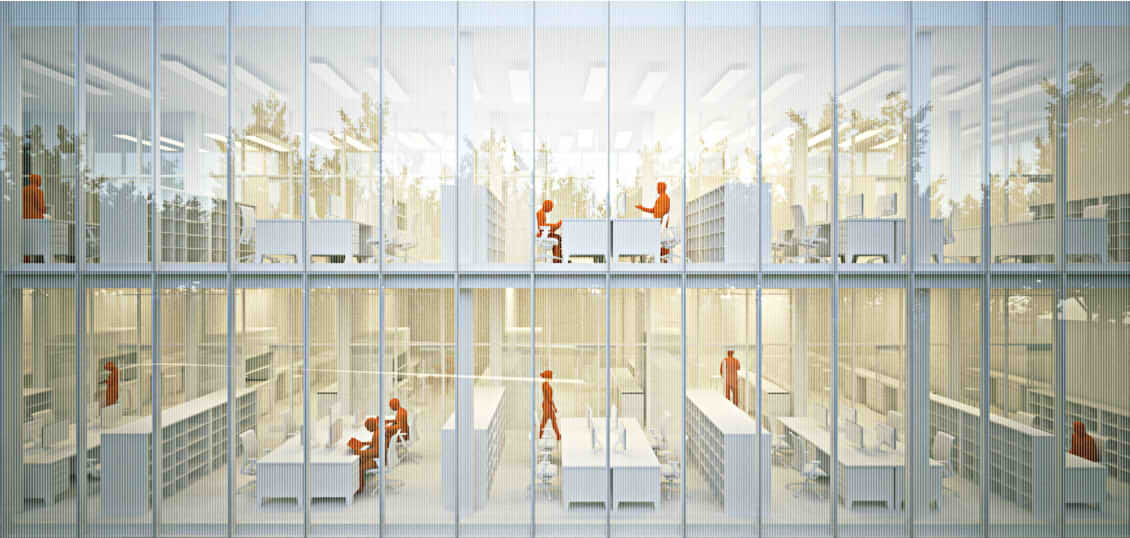
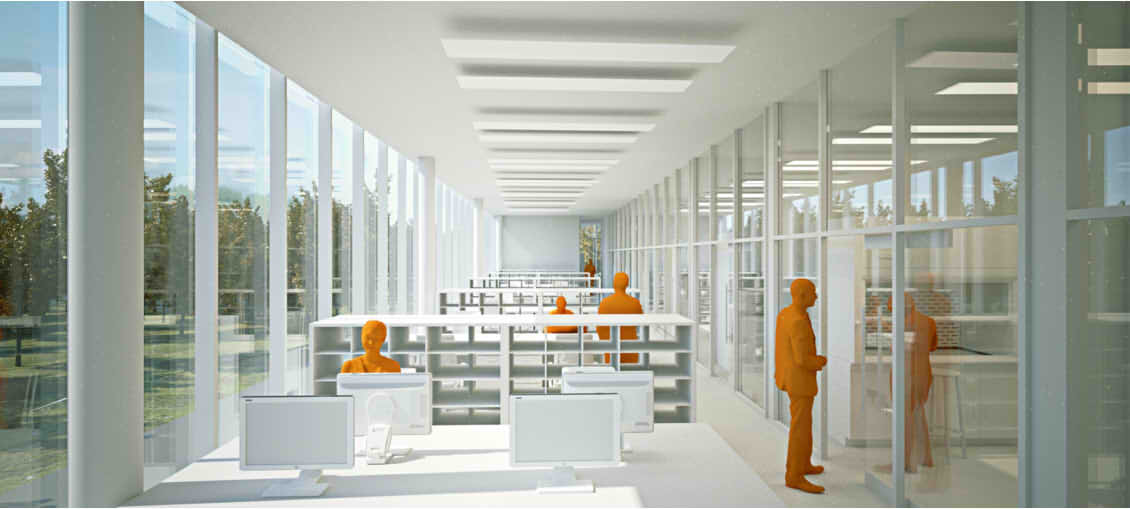
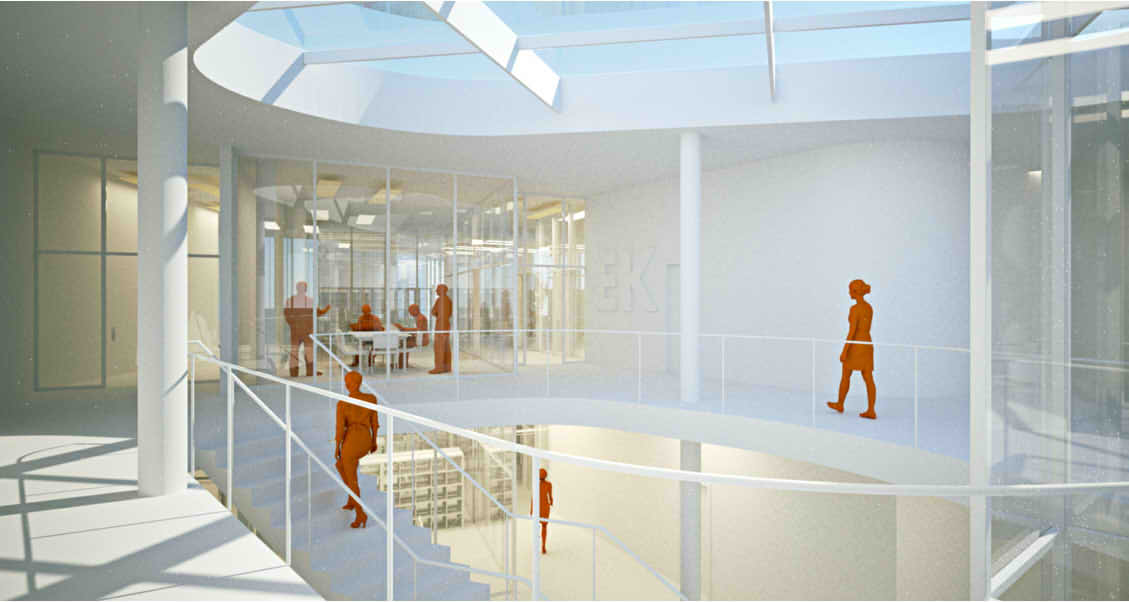
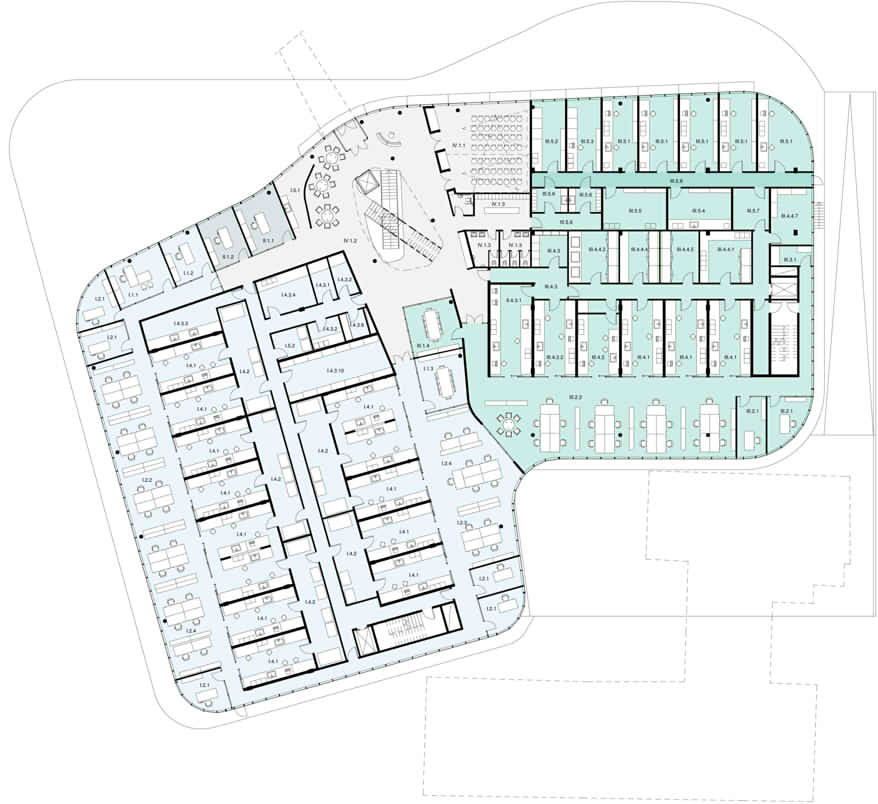

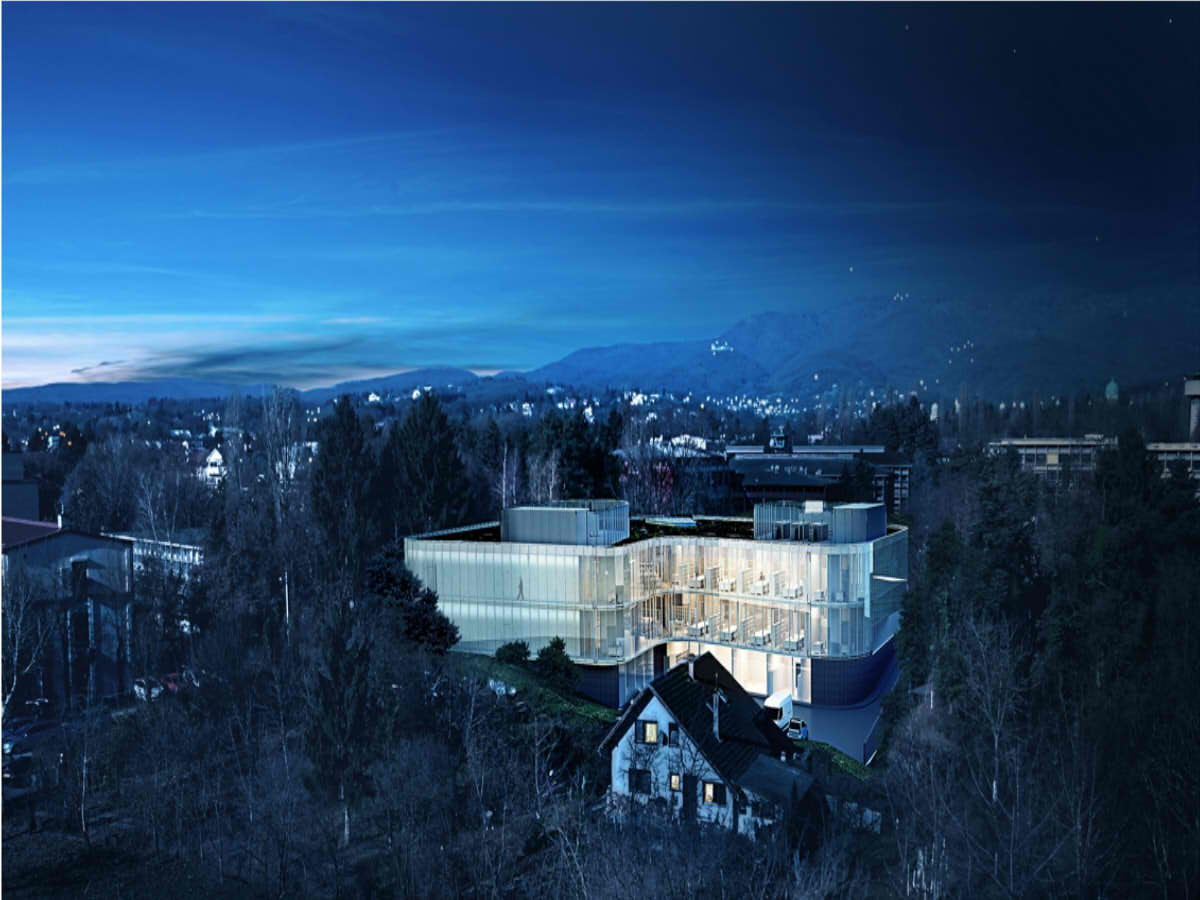
The internal planning of the New building uses a Deep-Plan concept with full height glazed facades and internal partitioning between laboratory and work-stations areas to allow for the maximum daylight and comfort-zone working.
We approached the design with the above 3 parameters and further on explored these in more detail – as follows:
We have taken the restrictions of height and the requirements of the brief/programme as positive attribute to the new design.
The placing of the new building has been determined by 3 issues:
(i) The arrangement of the internal functions which thereafter have indicated footprint and hence volume.
(ii) The requirement to keep building XXXX until completion of the New object.
(iii) The topography of the land and its landscape
There were, consequently, other subsidiary design decisions:
(a) The main Entrance to the north on ground level – located under the new “Mandelbrot bridge” which will concert the new building to the existing Wing 5.
(b) Section: the new building is arranged with a semi-sub-level / sutterean) which has a full face facing South and East –onto a courtyard which can be accessed by vehicle via an inclined road from the existing campus road .
(c) Maximum transparency and main working places with external facade and/or day-lit spaces.
(d) Placing of main HVAC equipment on the roof.
(e) Maximum energy efficiently construction ( green roof and triple glazed insulated solar glazing)
(f) Parking are to the West
Clear internal organisation with central main vertical circulation ( which connects to the main bridge and entrance).
As described before the common areas are central to the new building providing both a focus for entrance and vertical circulation within the Atria Void.
Structure: all main structures will be reinforced concrete as a low-raise building with the lower level as sub-level, the demand on vertical structures can be reduced. The column rasta will allow for a low down-stand of beams and in some case no down-stands which maximized the efficiency of routing of horizontal ventilation ducts. .
Exterior: all existing facade will be with thermal and solar proofed glass ( 60% thermal absorption) treated with ceramic frit in varying strata according the orientation of the building. By investing in thermal efficient glass one can avoid external shutters and have internal roller blinds for solar deflection only.
By specifying glazing such as Pilkington Opti-therm™ S3 combined with Opti-white this provide a Ug-value of 1.1 W/m²K when used in a standard double IGU (Insulated Glass Unit). In addition to its very high light transmittance and low light reflectance, it offers a high level of neutrality, making it ideal for large glazed areas with demanding design.
Low solar heat gain coefficient reduces the heat entering the building, thereby lessening the need for air conditioning and decreasing energy loads;
· Low light transmittance minimizes the solar glare;
· High external light reflectance providing privacy with medium internal reflectance still allowing a clear view to the outside;
· Durable single stock toughened off-line coated glass, easy to handle and process – can be cut, laminated, toughened, heat-strengthened, bent and made into Insulating Glass Units using standard processing techniques;
· Perfect colour match whether toughened or annealed;
Anti-glare retractable micro-louver blinds will be installed internally on all facades
Roof: Will be a flat roof with a high grade thermal insulation, covered as a green roof. Rainwater (pluvia system) would take all rainwater to the vertical shafts in the Core ( which is also used for irrigation of the green roof during summer months.) – this allows for an efficient “topping up” of the reservoir without using main water constantly.
Efficiency: the layouts as given here are based on our understanding the client’s requirements and combine both Cellular and Open office type areas. This combination reduces the usable area whilst maximizing the regulated access routes ( for fire escape and general circulation)
CONCEPTS
New laboratory building in the Rudjer Boskovic complex
-
SERVICES RENDERED
Design
-
PROJECT SIZE
6600m2
-
PROJECT VALUE
58.000.000 HRK
-
PROJECT PERIOD
2016 – 2017
-
INVESTOR
Ministry of science and education




